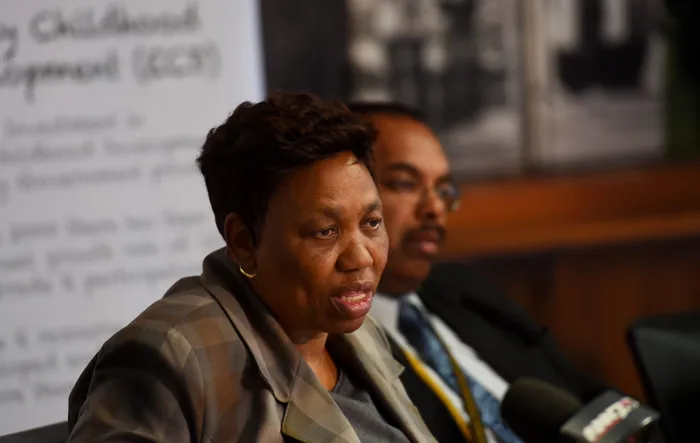South Africa begins structured withdrawal of SANDF from the Democratic Republic of Congo

Minister of Defence and Military Veterans, Angie Motshekga gives an update regarding the phased withdrawal of SANDF troops from the eastern DRC.
Image: Supplied
The phased withdrawal of the South African National Defence Force (SANDF) troops from the war-prone eastern part of the Democratic Republic of Congo (DRC) marks a significant new chapter in regional peace-keeping efforts.
This was according to Minister of Defence and Military Veterans, Angie Motshekga, who provided an update on the phased withdrawal of the SANDF during a media briefing in Pretoria on Sunday.
She explained that the withdrawal was a structured process, designed to ensure the safe return of both troops and equipment was not compromised.
The soldiers were deployed in the DRC in December 2023 as part of the Southern African Development Community (SADC) and UN peacekeeping deployments.
Fourteen SANDF members have been killed and several injured during intense combat with the M23 rebel group near Goma.
Motshekga praised the "brave men and women of the SANDF" for serving with honour, pride, professionalism, and commitment under extremely challenging circumstances.
“I want to say to them your contribution has helped to lay the groundwork for peace in the region. And to the families of those who made the ultimate sacrifice, your loss is shared by a very grateful nation with full appreciation. Their memory will forever be etched in the history of our commitment to peace on the African continent,” she said.
South Africa remains committed to a peaceful, stable and a prosperous DRC, the minister added.
“Our diplomatic deployments and humanitarian engagements will continue. As we transit out of the active combat deployment, we reinforce our commitment to African-led solutions and the values of the African Union agenda 2063,” Motshekga said.
SANDF Chief General Rudzani Maphwanywa said the withdrawal was a result of political efforts and a signed agreement between the DRC and M23 to cease hostilities, aimed at achieving peace and stability in the eastern DRC.
He said the troops will proceed to the assembly area in Chato in Tanzania, from where they will return to their respective countries. Equipment will be transported to South Africa by sea, while personnel will travel by air.
The withdrawal process began on April 29, with an advanced team of 57 members and 13 trucks already currently at the assembly area, preparing for the rest of the soldiers to follow.
He declined to share further details, citing security concerns.
“What is a bit difficult for me at the moment is to give you the breakdown of future activities because that actually borders on the safety of our troops. Suffice to say the initial team is currently in Chato, the rest of the SADC members will move from Sake and Goma and they will disperse from the assembly area which is in Tanzania,” said Maphwanya.
He said the second batch was expected to reach the assembly area, with the entire withdrawal process set to conclude by the end of the month.
He explained that the withdrawal was being coordinated by SADC, which has allocated a budget funded by contributions from all its member states.
Lieutenant-General Lucky Sangweni, the chief of joint operations, said the initial plan was to complete the movement from Goma to Tanzania in one day, given the short distance. However, site conditions and vehicle breakdowns delayed the process, taking two days.
He said preparations are now underway for phased movements from Goma to Tanzania, with adjustments made to accommodate the challenges encountered.
“Our plans might now be affected in terms of when exactly we will be able to finalise the movement but there is quite a lot of work that is being done in Goma and Sake,” he said.
Cape Times
Related Topics: